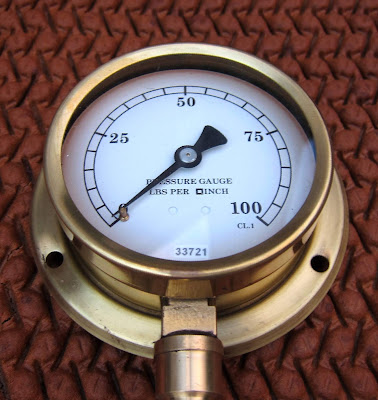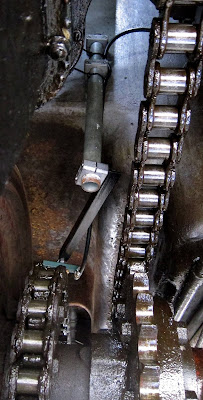I began with the boiler connection and isolating valve.
 |
| Isolating valve plumbed into the boiler orifice |
I completed the joint using Rocol steam seal. Total loco unavailable time: about half an hour!
I then fitted the standard buffer beam equipment using the purpose-designed flange.
 |
| Standard buffer beam equipment fitted to buffer beam (1) |
 |
| Standard buffer beam equipment fitted to buffer beam (2) |
 |
| Blue PRV and safety valve attached to rear of flange (1) |
 |
| Blue PRV and safety valve attached to rear of flange (2) |
 |
| Steam Heating Pressure Gauge |
Having fitted the buffer beam equipment and attached the hose, I hitched up the hose end using the standard support links. It then became obvious that the assembly was somewhat lower than expected. On examining a MK1 carriage for comparison, the assembly is 6 to 8 inches lower.
 |
| Hitched with shortened support linkage |
Prior to steaming, the first test was to to check that the lower height would not prevent a connection being made to a carriage. As shown below, it is all OK.
 |
| May be low but fits perfectly. |











































